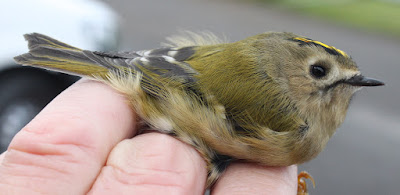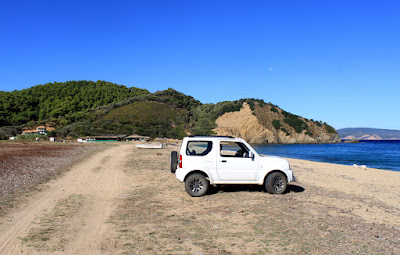What a morning! Busy, busy, busy.
I met Andy up at Oakenclough at 0700 hours where we set up shop and waited to catch the first Redwings of the autumn. All seemed quiet in the half light of dawn but by nine o’clock we’d ringed 50 birds without stopping for coffee or breakfast but one Redwing only to show for our hard work.
We caught steadily and finally called a halt at midday with 123 birds caught and both ringers cream-crackered after fully processing 30+ birds every hour. Whoever said that ringing birds was easy work?
It wasn’t Redwings that topped our leader board but that other autumn migrant the Goldcrest which made up 50% of our catch, plus a selection of other species bringing up the rear.
It wasn’t Redwings that topped our leader board but that other autumn migrant the Goldcrest which made up 50% of our catch, plus a selection of other species bringing up the rear.
Totals today: 61 Goldcrest, 15 Goldfinch, 14 Chaffinch, 14 Lesser Redpoll, 3 Chiffchaff, 3 Redwing, 2 Siskin, 2 Song Thrush, 2 Great Tit, 2 Blue Tit, 1 Coal Tit, 1 Long-tailed Tit, 1 Brambling and 1 Dunnock. Just two of these birds were recaptures from previous occasions, a Goldfinch and a Blue Tit.
Late September/early October are peak times for Goldcrest migration so while we expect to see more than normal it is highly unusual to catch so many. This might suggest a very good breeding season in the conifers of the northern UK from where the Goldcrests originate. Of the 61 caught today just four were adult birds, the remainder juveniles of this year.
The overall breeding population of Goldcrests in Europe is estimated at 20,000,000-37,000,000 pairs, which equates to 40,100,000-74,100,000 mature individuals. (Birdlife Internationl 2015).
Those figures do not include post-breeding juvenile birds that swell the population many times over during the summer months. Despite their tiny size Goldcrests are highly migratory, with a large influx of birds from Scandinavia and the near-Continent arriving on the east coast of Britain every autumn. Immigrants arrive in Britain from late August through to early November, departing the following March and April.
Early ornithologists didn’t believe a bird as tiny as a Goldcrest could fly across the North Sea unaided, and it was thought that they rode on the backs of migratory Woodcock or Short-eared Owls.
It was good to catch a Brambling today, one of the eight or more seen and heard overhead with at one point four feeding together on autumn berries above our heads.
It was after 11 o’clock when Chiffchaffs appeared and then three on the same net round.
We were so busy ringing today that accounting for visible migration became difficult, especially since most birds seemed to arrive out of sight from the south and west, behind the ringing station that faces north and east.
Lesser Redpoll, Chaffinch and Siskin all found their way into the nets without us seeing many of them.
Siskin
Redwings proved more visible with at least two flocks of 40+ seen and landing briefly in the plantation before heading off in a north-westerly direction.
Otherwise sightings – 30+ Swallows flying south. As we packed the ringing gear a calling Raven made us look high to the east and see a “kettle” of 12 circling Buzzards that caused the Raven's protest. They all drifted higher and west before disappearing into the cloud base hundreds of feet above.
On the way home I counted 5 more Buzzards – 2 at Nateby, 2 on Pilling Moss and then 2 on Stalmine Moss.
This is a productive time of year for birding, that’s for sure.
More news soon. In the meantime I'm linking to Wild Bird Wednesday and Anni's birding.
More news soon. In the meantime I'm linking to Wild Bird Wednesday and Anni's birding.




























































.JPG)







.jpg)












